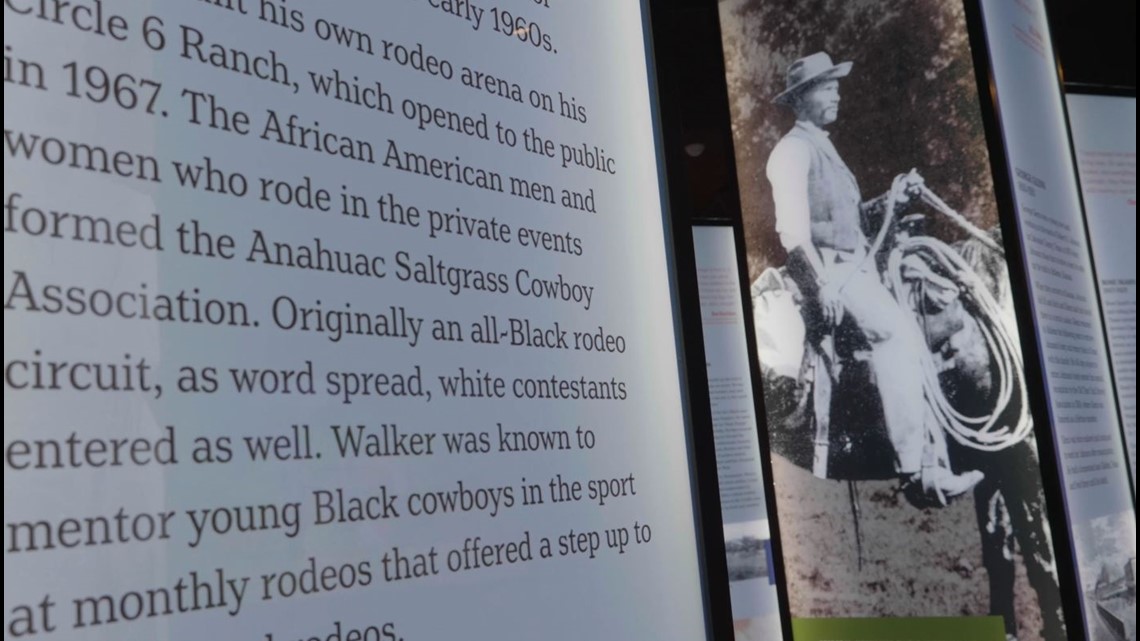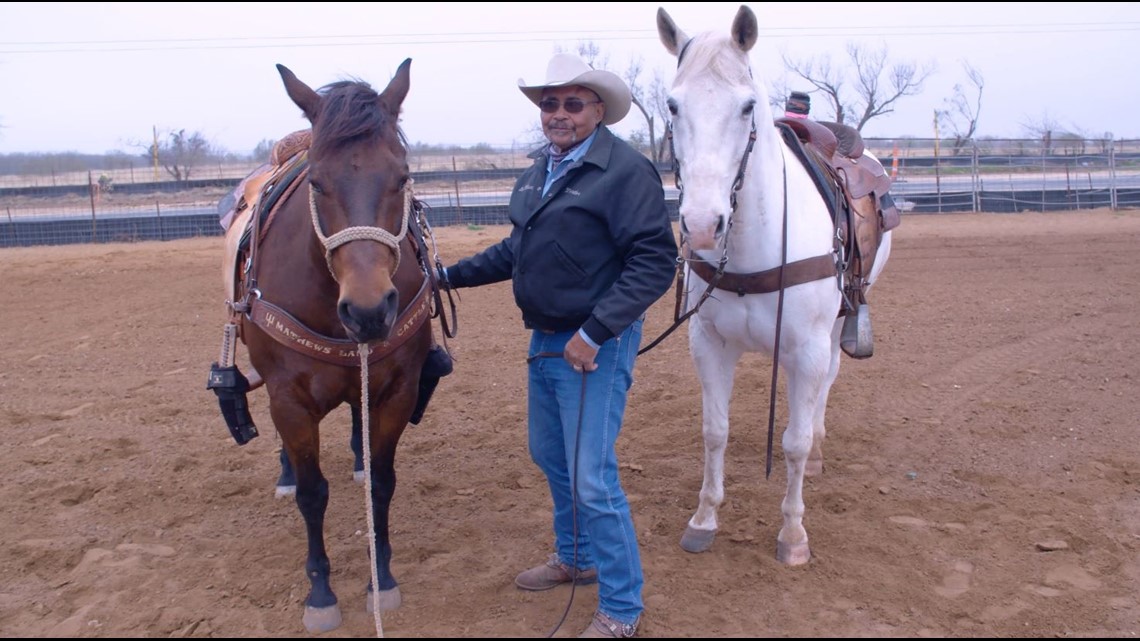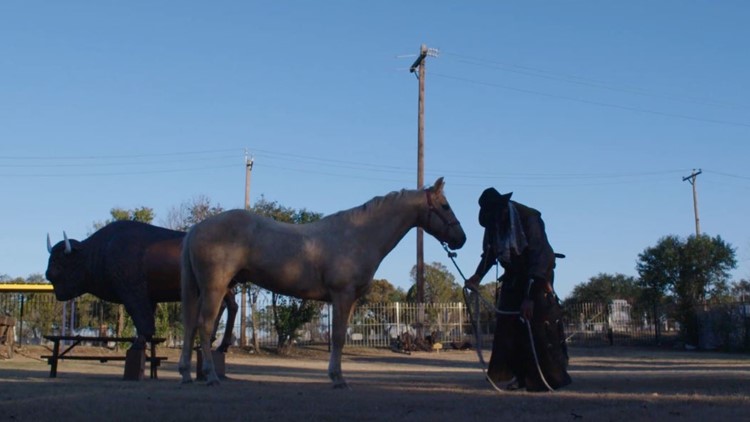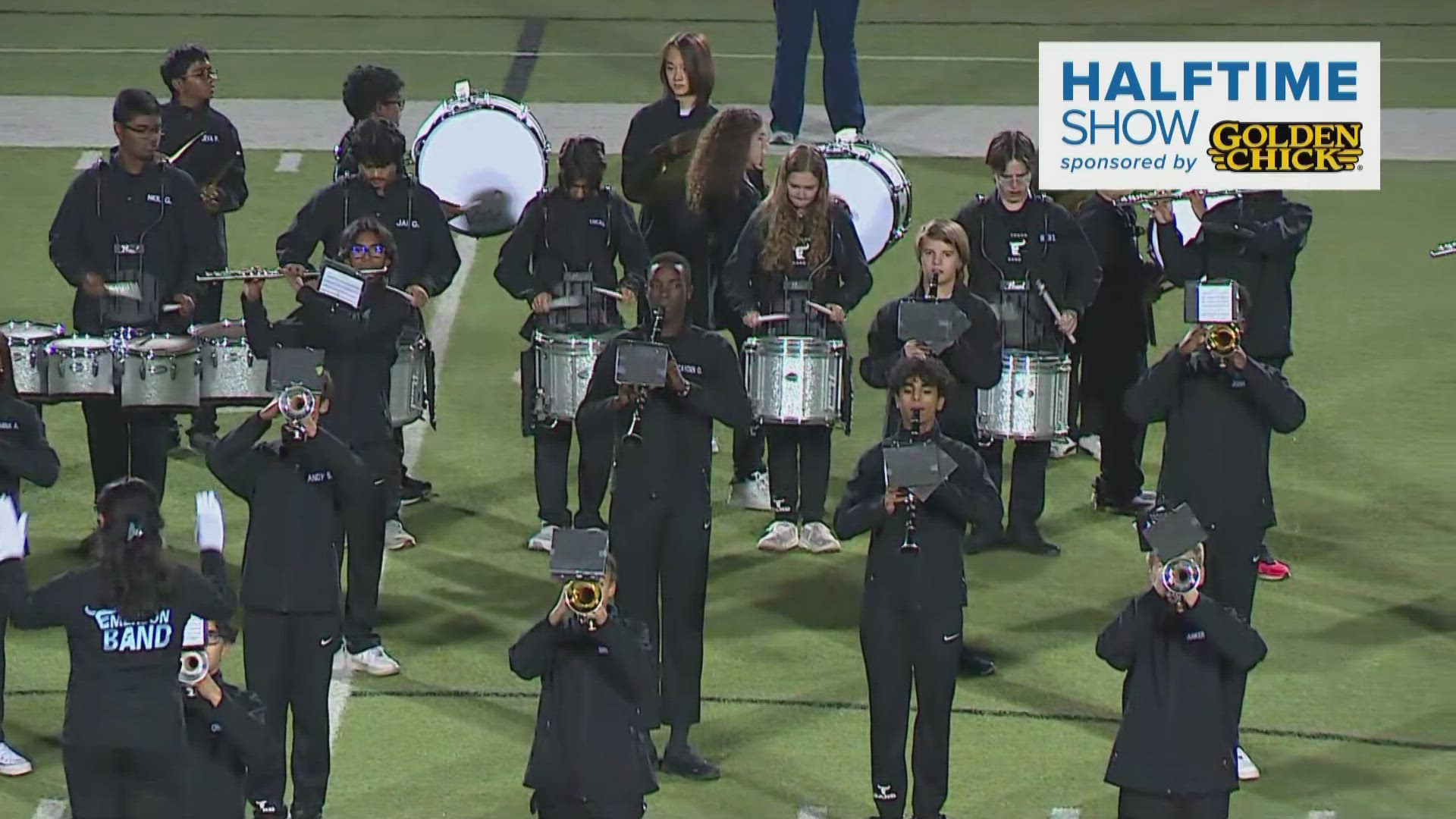SAN ANTONIO — The history of horsemanship in Texas is rich with details that have been hidden for nearly two centuries.
Historians say the stories of the first Black cowboys were whitewashed. Now, local rodeo legends and Texas trailblazers are shedding new light on the truth about these stories and putting them on display.
The story of the Black cowboys dates back to the open plains of America's early-1800s. It's a story of heroics, adventure and resilience that has gone untold for generations.
In fact, when you think of the legendary cowboys who settled the West, you might think of frontier favorites like the 1950s-era show "The Lone Ranger."
"When they first had 'The Lone Ranger' on the radio, they were talking about a Black man," said Larry Callies, founder of the Black Cowboy Museum in Rosenberg. "And people called into that radio station, saying, 'Hey, who is the Lone Ranger?' The guy said, 'It was a Black man.' People said, 'He's Black?' They turned it off.
"And they called in saying they wasn't going to listen to his radio station anymore. And the man said, 'Why?' They said, 'Because you said the Lone Ranger was a Black man.' He said, 'No, no, no, no! I didn't say he was a Black man; I said he work a black mask.' So they went on with 'The Lone Ranger' on radio, and then when they put him on TV he had to be a white man, because they wasn't going to accept him on TV as a Black man. So he was a white man with a black mask."
Callies was a musician with just a few degrees' separation from George Strait and the second Black cowboy to make it into an all-white Texas high school rodeo.


After a vocal injury ended his career as a country crooner, he devoted himself to honoring the unknown trailblazers of American history as the founder and curator of the Black Cowboy Museum.
"I'm a Christian first and a cowboy second. I know when God closes one big door he opens up another one; and he's opened this museum-wide open for me."
Callies says history and Hollywood tell different tales about the first cowboys, right down to where the word came from.
"'Cowboy' came from slaves back in 1821. They said, 'Hey boy, go get that cow!' he said. "They had a house boy, a yard boy and somebody who worked the cows; he was called a cowboy."
These colorful stories are now preserved on full display at the Alamo City; stories of progress from the Civil War to the Civil Rights Movement 100 years later that are now emerging in theatrical re-enactments and breathtaking museum exhibitions.
That includes at San Antonio's Witte Museum, where President and CEO Marise McDermott said the history of Black cowboys meshes with the museum's focus on the intersection of nature, science and culture as it pertains to the late-1800s and early-1900s.


"The Black cowboy story is one we really wanted to tell for a long time," McDermott said. "It's a traumatic story. It tells the story, in many ways, of enslaved people who became emancipated. And as they became emancipated, they were catapulted as the lead cowboys on massive trails from Texas all the way up into North America."
Tex Williams, a modern cowboy, points to two figures who he says inspired him more than anyone else in the world: his father and Dr. Martin Luther King Jr.
"When Dr. King made that speech, and integration was over in '64, I knew then that I had a chance to do what I wanted to do in a rodeo if they would've let me get in," he said.


Williams, who said he was the only Black participant at the finals of the high school rodeo he entered in 1967, is featured in the Witte's ongoing museum "Black Cowboys: An American Story."
Other names in the exhibit include living legends like Callies and Leon Coffee. Williams was the first Black cowboy to enter and win an all-white Texas high school rodeo.
But even after graduating with a gold buckle and enlisting in the military to serve his country, the prejudice continued. He says he was denied access to rodeo competitions simply because of the color of his skin.
"The guy told me they had had trouble with Blacks before," Williams said. "I told him, 'You know, all you had to do was let me ride this horse. I'm on my way to Vietnam and I'm supposed to be heading there for my country. And y'all won't let me get on the horse before I leave?' I said, 'That's kind of silly.'"
Williams' time would eventually come, when he would stack up triumphs as a champion in multiple rodeo events.
Now, next month, he'll be inducted into the Black Cowboy Museum alongside the men and women who blazed the trail for him.
"There are a lot of Blacks that did good that we didn't know anything about," Williams said.
But he celebrates knowing that the next generation can stand on the shoulders of breakthrough stories like his, as Black cowboys continue to ride for the gold.
"It's come a long way," Williams said. "But it's going to take a while."



